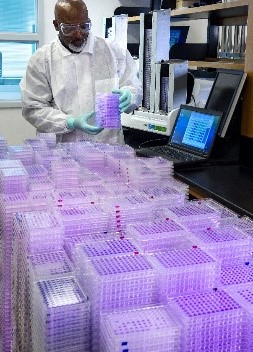CDC Technology Transfer Office (TTO)
The Centers for Disease Control and Prevention Technology Transfer Office (TTO) partners with industry, academia, non-profits, and other government agencies to transfer CDC’s research portfolio into products and services to improve public health.

Interested in collaborating with CDC scientists? Visit our “For Industry” section to learn more about opportunities with CDC and find out how you can collaborate with CDC subject matter experts to help address unmet public health needs. CDC PHIL photo, Robert Denty.

Encapsulated Streptococcus Compositions and Methods for Pneumococcal Vaccine, Probiotic, and Diagnostic Assay Development. CDC PHIL photo, Dan Higgins.

CDC scientists often provide solutions to unmet public health needs, by licensing or commercializing technologies. Here are a few ways CDC technologies have made an impact. CDC PHIL photo, James Gathany.

CDC OTI staff participate in various conferences. Please ask our team members about CDC’s technology, Small Business Innovation Research (SBIR) Program, and collaboration opportunities.
- Georgia Bio Innovation Summitexternal icon* – Virtual Conference, 11/4 – 11/6/20

CDC Researchers interested in reporting new inventions, developing collaborative partnerships with outside parties, and beginning new agreements can visit our “For CDC Researchers” section to find out how to get started with CDC TTO’s assistance.
CDC Photo, James Gathany.




